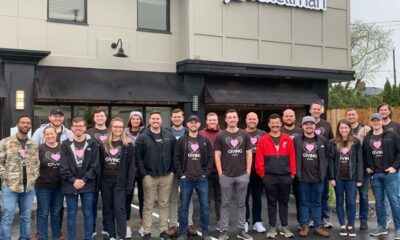The rainmaker days are over.
Rainmakers, the select charismatic few — usually partners — who brought in the vast majority of an accounting firm’s clients, are becoming obsolete as firms professionalize business development and shift their reliance off the individual and onto the collective team. Looking ahead, experts say the most successful firms will be those that entrench themselves in a niche and poach clients with their hyperspecialized services.
In the past, firms’ growth strategies were rudimentary and unsophisticated, according to Gale Crosley, CEO of Crosley and Co. Firms relied on the individual contributions of rainmakers to generate the bulk of their revenue while growth strategies remained largely unchanged year to year. Now, especially since the Paycheck Protection Program stimulated growth during the COVID-19 pandemic, “driving demand is on cruise control,” Crosley said.
“The fish are jumping in the boat. They’ve been jumping in the boat for five years, and it’s not a business problem they have to solve right now,” she explained.
It’s a straightforward scenario where there is too much work to do and not enough talent or time to do it, meaning strategic growth is on the backburner for many firms as they manage day-to-day business operations.
“Fulfilling the demand side is sucking all the energy out of the firm,” Crosley said. “They’re totally focused on getting the laundry out the door, offshoring and technology.”
“The firms who are on it — the A+ firms who have always been on it — they’re not hitting the pause button,” she continued. “Only firms who always knew that they had to carve out that time and say, ‘We’ve got to look at growth strategies for the future,’ those are the ones who are doing it right.”
Modernizing business development
Firms are now formalizing and structuring the process of finding and bringing in new clients. The first key to modernizing business development is moving the responsibility of client acquisition beyond individual rainmakers.
“It’s taking more of a matrix, relationship-focused approach, instead of a singular source of that rainmaker being out with the client,” said Rebekah Gardner, chief growth officer at Top 25 Firm Wipfli. “You start to identify these segments, these clients and prospects, and then you look at the team that you have on your bench, and you start to match up relationships and skills, and you build that matrix.”
The second key is specialization. Competition for clients is increasing as more firms look to own entire market segments and tailor their services to those select niches. Firms that choose to stay generalists put themselves at risk of losing business.
(Read more: “Pathways to Growth: Strategic client development.“)
“You have got to have industry experts sitting on your team so that you build that ability to have a conversation at their level,” Gardner said. “If you can’t show up like that, I don’t think you belong in the game sometimes.”
“Specialization and niches allow firms to perform a much higher value service to their clients,” said Tim Petrey, CEO of HD Growth Partners, a member firm of private-equity-backed accounting firm platform Ascend. “They can get much deeper with a client than the surface-level tax and compliance work. As a result, you form a higher degree of trust between the accountant that owns the relationship and the client much faster. It can be difficult for a ‘generalist’ style firm to compete with industry experts.”
But it’s easier said than done. Becoming a specialist requires the difficult task of dropping low-profit, time-consuming clients, and focusing resources on high-growth, high-return clients.
“Firms need to improve by looking closely at the clients they best serve and build a marketing strategy around that,” Petrey added. “Treat your firm like a real business and it’s amazing what comes naturally from that. Treating a firm like a partnership often leaves marketing efforts stale because partners can’t agree on the strategy, the ideal client profile, the budget, or even just as simply the contribution of their staff’s time to the efforts.”
The decline of rainmakers
The accounting profession’s ongoing labor shortage impacts everything within a firm, especially business development.
“Finding great accountants is hard enough. Finding great accountants who can sell is like hunting for a unicorn,” Petrey said.
“With one person coming into an industry for every five who are leaving, staff are getting asked to do things earlier on in their careers than their predecessors. Partners and shareholders are getting younger and younger because firms need to find a way to get those great people locked in for years,” Petrey continued. “As a result, most firms never focused on building any real brand loyalty. There is loyalty to an individual but not loyalty to a brand. The rainmakers of the prior generation are still out winning business the old school way, but there aren’t enough of those rainmakers in the next generation.”
“That’s the crux of the problem,” said Bob Lewis, president of The Visionary Group. “Why we have so much M&A going on right now is because of the lack of business development and a lack of networking skills. “
Besides, the traditional rainmaker model isn’t necessarily the best fit for modern firm culture. “When a firm has a great rainmaker that is a poor manager, leader or colleague, they’ll often look past their issues as a leader because they generate so much revenue, which causes firms to further struggle to maintain or improve culture,” Petrey said.
Instead of relying on rainmakers, some firms have turned to the internet and search-engine optimization to supplement client acquisition.
“What they missed is that the activity you generate through SEO is typically the type of clients you don’t want. It’s clients that are searching the internet looking for a new provider,” Lewis said. “The good clients go through the professional network. They go through the bankers, they go through their lawyers, they go through the insurance agencies, and they get referrals into another accounting firm.”
“I can replace the accounting part, the tax part, overnight. I can’t replace the trust part, and that’s what people have learned and figured out how to sell,” Lewis said.
The rise of the CGO
With the sunset of the rainmaker era comes the dawn of the chief growth officer.
CGOs are the newest additions to small and midsized firms’ staff. While mergers and acquisitions certainly fall within a CGO’s remit, they are also focused on trimming clients that don’t fit the firm’s portfolio, upskilling the next generation of partners, adding more advisory services, and expanding relationships with existing clients, Lewis said.
CGOs also need to be “making sure that people inside of the firm are being deployed in their highest and best use,” Wipfli’s Gardner said. “Traditionally we’ve used our own partners, rank and file, to think about these things, but sometimes it takes an outsider perspective to come in and say, ‘Hey, let’s think about this a little bit differently.”
Unlike the average accountant, CGOs specialize in general management. The addition of them into accounting firms is a new trend that has only been accelerated by the wave of private equity investment in the profession.
(Read more: “The rise of the chief growth officer.“)
“Most accounting firms have historically run like a partnership rather than a real business,” Petrey said. “PE will continue to professionalize firms of all sizes to be better and smarter at business development. As a result, non-PE backed firms will need to find ways to make that investment into their firms to remain competitive.”
“The preexisting resource constraints and the seasonal nature of the business makes it really hard for anyone to make meaningful progress on a strategic initiative,” said David Wurtzbacher, CEO of Ascend, which is backed by PE firm Alpine Investors. Each of Ascend’s platform firms is required to have a CGO.
“For a long time, the public accounting industry couldn’t and didn’t attract general management type talent — think MBAs — because of the partnership model. It was, ‘We can’t really pay you that much, and we definitely can’t give you equity in these companies, and we’re not really growing that much,’ and so you didn’t have access to the talent markets the way other industries have access to it.”
“But the fact remains, there are people outside the industry who might be better suited for driving growth and transformation and strategic initiatives,” Wurtzbacher said.


 Accounting1 week ago
Accounting1 week ago
 Economics1 week ago
Economics1 week ago
 Economics1 week ago
Economics1 week ago
 Personal Finance1 week ago
Personal Finance1 week ago
 Economics1 week ago
Economics1 week ago
 Personal Finance1 week ago
Personal Finance1 week ago
 Finance2 days ago
Finance2 days ago
 Personal Finance1 week ago
Personal Finance1 week ago











